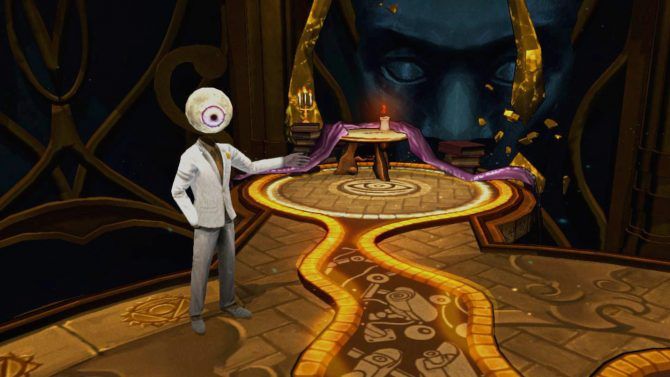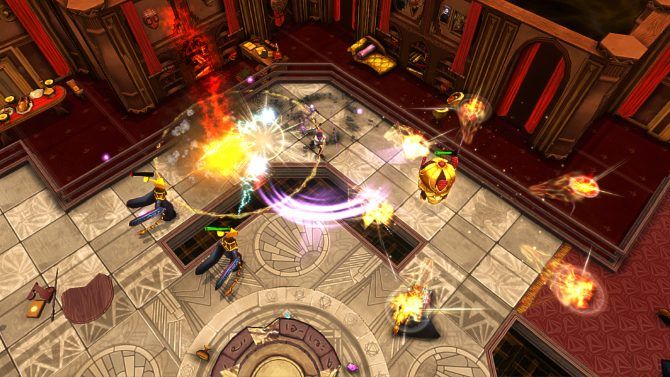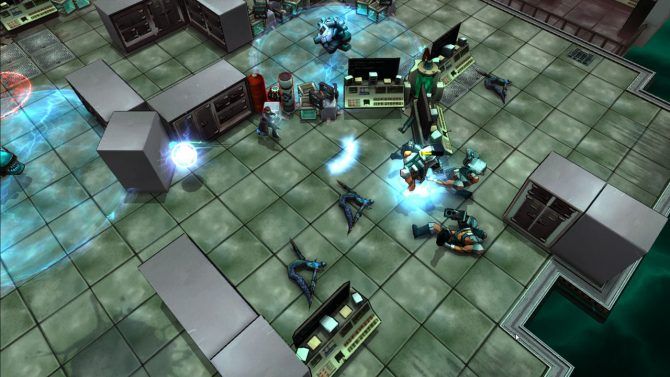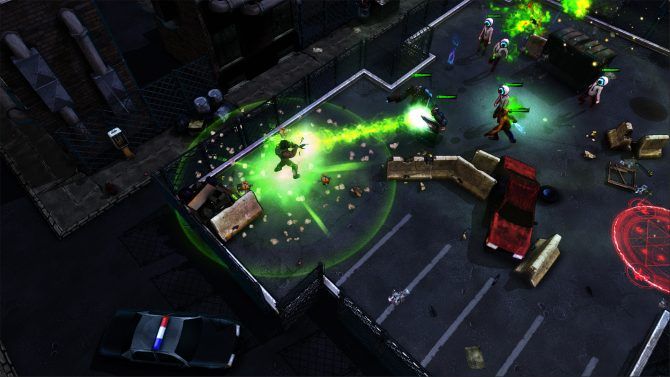While looking through the PlayStation Store, it’s clear to see the rogue-like genre has become a staple of any gaming catalogue with an influx of new titles being released every week. These range from the stellar The Binding of Isaac and Rogue Legacy, to the not-so-great shovelware of titles flooding the marketplace. Trying to stand out from the crowd is tough to achieve in this day and age, but developer Clever-Plays is hoping to do so with its rogue-lite title Leap of Fate.
What makes Leap of Fate more intriguing is not how progress is measured like other rogue-likes, but how many passive abilities remain active even after death. When your health bar reaches zero you start fresh. However, in Leap of Fate you retain every single upgrade you’ve unlocked from the hundreds available providing a legitimate incentive to keep on playing. Ultimately, your goal is to unlock every ability, upgrade, and character, eventually culminating in becoming an unstoppable force mowing through hordes of enemies.
In Leap of Fate, the setting is an alternate-future New York City, in which technology and magic are at the forefront of society. Technomancers serve as the main conduits of power who can save or destroy as many civilizations as they please. You start only with one character unlocked, a Shadow Mage named Aeon, and further into your adventure by completing missions you unlock three other powerful figures to play as.
As you advance, story elements unlock and help piece together each character’s motivation and history. In doing this, Leap of Fate seems less interested in pushing the narrative down your throat and more determined in making you want to seek it out.
[pullquote] "Ultimately, your goal is to unlock every ability, upgrade, and character, eventually culminating in becoming an unstoppable force mowing through hordes of enemies."[/pullquote]
Each character you play as is varied enough in the ways they use specific abilities and attacks. Aeon is the most well balanced of the bunch with an adequate ranged shot, Big Mo can literally mow down enemies with his powerful laser cannon, Mukai is the close-range specialist, and Rasimov is a Occultist who uses dark magic and powers for the greater good of the world. It speaks to the quality of Leap of Fate that each character’s gameplay style is very unique from one another.
Gameplay centers around basic twin-stick shooting on an isometric plane. In every combat room you enter enemies will be teleported in, attacking with either melee or ranged attack motions. Luckily enough, it’s easy to learn enemy attack patterns making you feel like actual progression is taking place.
Players can use special abilities called Glyphs and teleportation maneuvers during battle, but they can only be used a certain amount of times per enemy encounter, unless you pick up recovery items dropped by enemies or destroyed objects in the environment. The health bar works in the same manner, only it can’t be refilled between each scenario so you have to keep a better eye on it. I (in particular) did not care for how the aiming centers around moving a target to shoot in a desired direction. It would have felt much better and more intuitive to just push in a direction and perform the action.
[pullquote]"It speaks to the quality of Leap of Fate that each character’s gameplay style is very unique from one another and it’s impressive the amount of variety each character possesses."[/pullquote]
Other than your regular attacks, each character can use a special ability, for instance the previously mentioned Glyph and Shadow Walk. Glyphs vary in usefulness and power. Every character starts with a set Glyph, but new ones can be purchased or earned in a challenge room, and are usually more effective for destroying enemies later in the game.
Shadow Walk, on the the other hand, allows you to warp between points on the map without taking damage. When Shadow Walk is powered up, either through upgrades or progressing through the game, it can even damage all enemies in the way or leave behind a decoy enemies will attack.
The game’s six chapters consist of cards being laid out on a table in a pyramidal shape, similar to other rogue-likes such as Hand of Fate. Only the top card is face-up and when you complete the objective for that specific card it lets you choose from one or two others linked to the card. The process of clearing cards continues down the table until the Guardian card has been discovered and defeated. You never know what type of card is going to be flipped over providing a unique experience each play through and this also helps keep it fresh.
[pullquote]"You never know what type of card is going to be flipped over providing a unique experience each play through and this also helps keep each gameplay loop feel fresh."[/pullquote]
Cards range from clearing a given Challenge card, buying items from a Shop card, or killing all the enemies in a Combat card. How many skulls at the top of the card from one through three indicate the level of difficulty with a small to big chest on the card face representing the type of reward.
Selecting any cards adjacent to the one you just cleared makes the experience more like exploring rooms in a dungeon without all the other added fluff from dungeon crawlers. While this is a pretty neat way of presenting challenges, a sense of repetition starts to settle in after subsequent play throughs, due to most of the cards being a slight variation of a reward, enhancing a skill or killing all the enemies per card. Although the challenges and enemies you face become familiar, the gameplay remains fun with some strategy elements of choosing which enemies to kill off first.
While physical rewards are largely not present in Leap of Fate, the most important currency you earn is Mana. Mana is used to unlock new skills with an Upgrade card from a skill tree with three branching paths representing Passive, Attack, and Mobility skills. These provide a wide range of effects, from being able to freeze enemies after being hit, to adding onto your health or attack power. Each skill tree is not only tailored to your character but is randomized each play through, again, providing a unique experience for each time you start from square one.
[pullquote]"Leap of Fate was a pleasant surprise in the crowded rogue-like genre and provides a great value for all the variations in play styles."[/pullquote]
You can tell this has been ported multiple times because the graphics were largely flat and uninspiring, although I did appreciate how each stage felt like a wholly unique setting complete with some unsettling backdrops further into your adventure. Also, the attention to detail in an items destruction is a nice touch. Similarly, the music is hit-and-miss with some heavy metal riffs dominating boss battles or changing to simple chants for being in a mystical setting. Overall, forgettable but it gets the job done.
Leap of Fate was a pleasant surprise in the crowded rogue-like genre and provides a great value for all the variations in play styles. While the game suffers from a sense of repetition after repeated play throughs with enemies and challenges, gamers looking for a solid action oriented affair will have plenty to keep coming back for.





